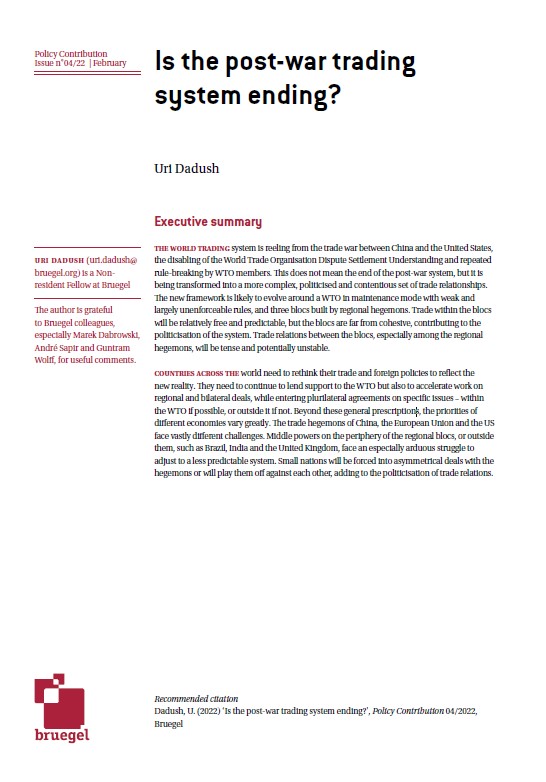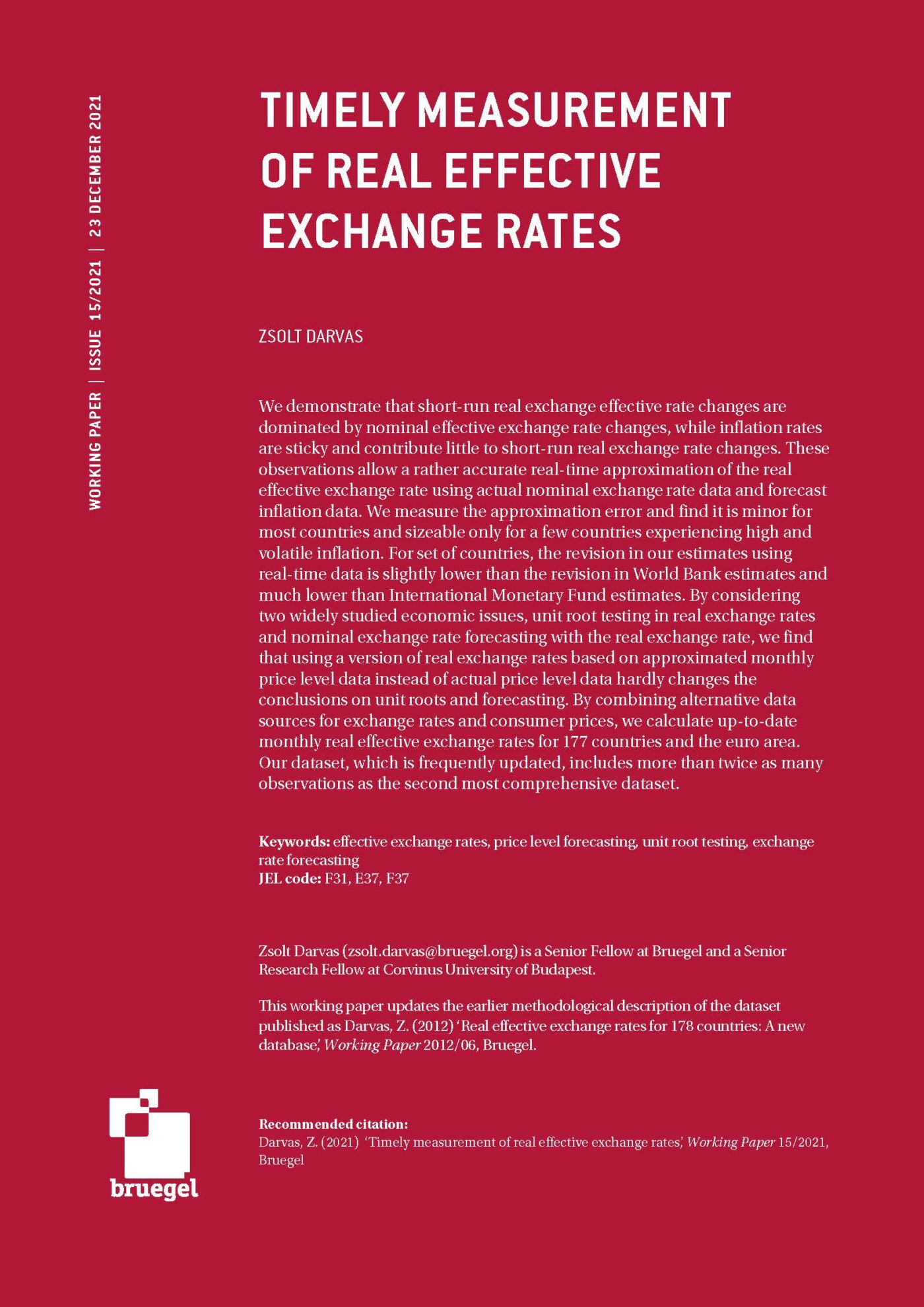Blog Post
Free trade in Africa: An important goal but not easy to achieve
The signing of the African Continental Free Trade Agreement and the Kigali Declaration may signal a new push towards economic integration on the African continent. However, it remains to be seen how many more countries sign up, how successfully 'phase two' is implemented later this year, and whether the agreement can be built upon to more comprehensively promote trade in services and a reduction of non-tariff barriers.
On March 21st 2018, representatives of 44 African countries met in Kigali, the capital of Rwanda, to sign the African Continental Free Trade Agreement (AfCFTA). At the same gathering, 30 countries signed the protocol on free movement of people, while 47 countries signed the Kigali declaration – the latter of which sets the political goal of establishing a free trade area[1].
All these agreements may help with intra-African economic integration. Politically this is an important declaration in favour of free trade, at a time when the US president Donald Trump threatens to undermine the existing global trade order[2]. This also marks a success for the African Union (AU), which would like to follow experience of the European Union (EU) – though it has achieved mixed results so far.
Limited role of intra-African trade
African economies trade relatively little between themselves. As seen in Figures 1 and 2, less than 20% of total exports and imports of Sub-Saharan Africa (SSA) and the Middle East and North Africa (MENA) goes to and comes from these two regions, though this share has grown slowly over the last decade. The share of SSA is even smaller (below 10%) and largely stagnant.
There are several reasons behind regional under-trading: the low development level of African economies and their excessive dependence on commodity production and exports, protectionist trade policies, weak transport infrastructure, poor trade logistics, and high security risks. Below we will briefly comment on each of them.
Commodity monoculture
In 2016, only 17 out of 53 African countries recorded an income-per-capita level in terms of purchasing power parity (PPP) above 5,000 international dollars in constant 2011 prices. Only 10 of them managed to reach beyond 10,000 international dollars in the same terms, including oil-producing Equatorial Guinea, Gabon and Algeria and non-oil commodity producers Botswana, South Africa and Namibia (see Figure 3).
Figure 4 shows the far-reaching dependence of African economies on commodity exports, mainly fuels (oil, natural gas and coal), metal ores and other minerals. Agriculture commodities play, on average, a less important role, although there are exceptions such as exports of cocoa beans by the Ivory Coast. Furthermore, several countries depend on the export of just one or two commodities (AEO, 2017) making them vulnerable to fluctuations in global demand, and natural disasters (especially in case of agriculture commodities).
Figure 4 also demonstrates the vulnerability of African economies to commodity price fluctuations on the world markets. For example, the collapse of commodity prices in 2014 caused a substantial reduction of African exports and, consequently, imports (due to balance-of-payment constraints). As a result, economic growth in the region, rapid in the decade of 2000s and early 2010s, has slowed down remarkably.
Structure of African imports is similar to that of other developing countries. Metal products, machinery, equipment, transportation means, chemical products and other industrial goods are the basic imported items. The majority of imported goods come from the EU, China, India and the US.
Clearly, a low development level and narrow specialisation in producing one or few commodities sold to the global markets does not leave much room for intra-African trade (because of limited complementarity of African economies). Nevertheless, this room is further narrowed by trade policies, weak infrastructure and a poor business climate.
Tariff- and non-tariff barriers
A large majority of African countries belongs to the World Trade Organization (WTO). Only Algeria, Libya, Sudan, South Sudan, Ethiopia, Eritrea, Somalia, Comoros, Equatorial Guinea and São Tomé and Príncipe remain outside this organisation but most of them have negotiated their accession. Nevertheless, trade policies are, in most cases, protectionist. Both the declared most-favoured-nation (MFN) rates and the effectively applied rates are much higher than those in the EU and US (red bars in Figures 5 and 6). They are also higher than the five developing economies belonging to the Association of South East Asian Nations (ASEAN-5), i.e. Indonesia, Malaysia, Philippines, Thailand and Vietnam (green bars in Figures 5 and 6).
In more than half of African countries, the weighted mean MFN rate exceeds 10%; in all others except Mauritius (the only truly free-trade African nation), it exceeds 5% (Figure 5). In the case of the effectively applied tariffs (Figure 6), the picture looks equally gloomy: most African countries applied higher, sometimes much higher, tariffs than their ASEAN-5 competitors – let alone the EU and US. Only four members of the Southern African Custom Union (SACU), i.e. Botswana, Lesotho, Namibia and Swaziland, join Mauritius in the group of low-tariff countries.
Apart from tariffs, there are numerous non-tariff barriers (NTB) that add to the protective measures. In many instances, these barriers can effectively stop cross-border trade in goods and, especially, in services. They are not easily detectable and measurable, and we do not have estimates of their tariff equivalent.
Going beyond explicit NTBs – such as technical barriers to trade (TBT), sanitary and phyto-sanitary (SPS) measures and certification – one must also mention limitations to the free movement of people. African citizens need visas to visit more than 75% of other African countries. Countries of Northern and Central Africa have the most restrictive visa policies against their neighbours (AEO, 2017).
Restriction of the free movement of people limits trade opportunities, especially (but not only) in services. Obviously, in a region where modern communication platforms and digital trade remain underdeveloped, the role of direct contacts between traders is important. Visas also harm cross-border shuttle trade and intra-African tourism. In this context, signing a protocol on free movement of people in Kigali is good news. The bad news is that several important countries – such as South Africa (plus their SACU partners), Nigeria, Tanzania, Ivory Coast and all North African countries – have not signed this protocol.
Overall, both tariff and non-tariff barriers strongly discriminate against intra-continental trade as compared to trade with external partners. Developed countries, especially the EU and US, offer lower import tariffs than African neighbours. In addition, almost all African countries benefit from the Generalized System of Preferences (GSP), i.e. unilateral trade privileges in the form of zero or very low tariffs offered by the developed economies as a form of development assistance.
Complicated network of regional agreements
In past decades, African countries concluded several, often territorially overlapping, trade agreements (Table 1), which aimed at promoting sub-regional economic integration. Most of them declared ambitious goals (building a customs union) and three of them (SACU, the West African Economic and Monetary Union [WAEMU] and the Central African Economic and Monetary Community [CEMAC]) were to complement the already existing (from colonial times) monetary unions. However, none of them included trade in services and most of them did not address matters such as non-tariff barriers, or investment regimes.
If one examines and compares Figures 5 and 6, i.e. the declared MFN and effectively applied tariffs, she easily finds that the tariff-reduction power of these agreements has been limited. For example, among the countries with the highest applied tariffs are members of CEMAC. Unsurprisingly, in 2016 the intra-CEMAC exports accounted for only 3.1% of the total exports of its members; for intra-CEMAC imports, the figure stood only a little higher, at 4.2% (Siba and Sow, 2018). Members of WAEMU, the Economic Community of West African States (ECOWAS) and, partly, members of the Common Market for Eastern and Southern Africa (COMESA) are not far behind CEMAC in this respect.
The sad story is that the existing sub-regional trade agreements in Africa do not work or work only partly, for various political reasons. The SACU seems to be a positive exception.
On the other hand, data on intra-African trade (Figures 1, 2 and 4) confirms that it is slowly increasing. This concerns the share in the overall trade rather than the absolute volume. The absolute volume of the overall trade declined in 2014-2016 due to fall in commodity prices, while the intra-African volume has been largely stagnant. The advantage of intra-African trade concerns its composition: manufacturing products play a bigger role here than they do in the exports to external partners (AEO, 2017, African, 2018).
Poor infrastructure and logistics
In addition to formal and informal trade barriers, poor infrastructure and logistics constitute another factor that discourages intra-continental trade. Even a superficial look at the economic map of Africa provides suggestions of the underdeveloped transcontinental road and, even more so, railway networks. Modern transport organisation and trade logistics are rare. Bureaucratic and corrupted border and customs procedures and numerous security risks (coming from violent conflicts and organised crime) make transportation and transit of goods between and within countries even more complicated. As a result, costs of moving goods within African countries are up to five times higher than in the US (Donaldson, Jinhage and Verhoogen, 2017).
Table 2 compares the SSA and MENA regions with four other regions in terms of the Logistics Performance Index (LPI), which is a synthetic measure of the effectiveness of trade logistics. Clearly, SSA is the worst-performing region in this comparison, especially in the categories of ‘Infrastructure’, ‘Customs’, ‘Tracking and tracing’ and ‘Logistics competence’. MENA does a bit better, outperforming not only SSA but also the regions of South Asia, and Latin America and Caribbean.
Too early to claim success
Although the signing of AfCFTA and the Kigali Declaration may signal a new push towards trade and economic integration on the African continent, it is too early to speculate on its actual impact in this sphere. First, the two largest continental economies – Nigeria and South Africa – and a few others – such as Tanzania, Botswana, Namibia, and Zambia – have not signed the AfCFTA treaty (see Kazeem, 2018). Overall, the ‘outs’ represent some 40% of African GDP. Whether or not they will join the AfCFTA at a later date remains unclear.
Second, as with most of the previous sub-regional agreements, AfCFTA concentrates on trade in goods and gradual reduction or elimination of import tariffs. The promotion of trade in services and a reduction in the number of NTBs have both been included, but in less comprehensive and ambitious ways. Regarding the NTBs, the main issues covered by the AfCFTA are cooperation of customs authorities, trade and transit facilitation, and mutual recognition of standards. Only ‘Phase Two’ of the AfCFTA, to be launched later this year, will tackle the questions of intra-African investments, intellectual property rights and competition policy (African, 2018).
Third, the new agreement assumes a long implementation period. Much will depend on political interest, and the determination of all parties to follow their commitments and avoid political traps that have so often inhibited implementation of past agreements. Members of the existing sub-regional agreements will face an uneasy challenge in the form of their harmonisation with AfCFTA.
Finally, the successful implementation of AfCFTA will depend on many supplementary policies and programmes – such as conflict resolution, fighting corruption and organised crime, developing transcontinental transport and telecommunication networks, liberalisation of the movement of people, improvement of trade logistics, and governance reforms. Here the key development partners – such as the UN agencies, International Monetary Fund (IMF), World Bank, African Development Bank, European Bank for Reconstruction and Development (active in North Africa), EU, US, China and other countries involved in providing aid to Africa – have an important role to offer.
[1] https://au.int/sites/default/files/pressreleases/34033-pr-indication20of20signing20authority20-20updated20final20final20docx.pdf
[2] See analyses and comments of Bruegel researchers on this issue – Dadush (2018), Chiacchio (2018), Demertzis, Sapir and Wolff (2018).
References
African (2018): African Continental Free Trade Area. Questions and Answers, African Union, United Nations Economic Commission for Africa, African Trade Policy Centre, March 15, https://au.int/sites/default/files/documents/33984-doc-qa_cfta_en_rev15march.pdf
AEO (2017): African Economic Outlook 2017, African Development Bank, Organization for Economic Cooperation and Development, United Nations Development Program, Chapter 3: Trade policies and regional integration in Africa, http://www.africaneconomicoutlook.org/en/outlook/trade-policies-and-regional-integration-in-africa
Chiacchio, F. (2018): Which sectors would be most vulnerable to EU-US trade war?, Bruegel Blog, 15 March, https://bruegel.org/2018/03/which-sectors-would-be-most-vulnerable-to-eu-us-trade-war/
Donaldson, D., Jinhage, A., and Verhoogen, E. (2017): Beyond borders: Making transport work for African trade, The International Growth Center, The London School of Economics and Political Science, March, https://www.theigc.org/wp-content/uploads/2017/03/TransportGrowthBrief_FINAL_WEB.pdf
Dadush, U. (2018): U.S. steel and aluminium tariffs: how should the EU respond?, Bruegel Blog, 9 March, https://bruegel.org/2018/03/u-s-steel-and-aluminum-tariffs-how-should-the-eu-respond/
Demertzis, M., Sapir, A., and Wolff, G. (2018): Europe in a New World Order, Wirtschaftsdienst Zeitschrift für Wirtschaftspolitik, Vol. 98, Issue 13, https://archiv.wirtschaftsdienst.eu/downloads/getfile.php?id=3924
Kazeem, Y. (2018): One African Market? Africa’s hope for a historic continental free trade area is off to a shaky start, Quartz Africa, March 22, https://qz.com/1235235/africa-continental-free-trade-area-44-countries-sign-agreement-without-nigeria/
Siba, E., and Sow, M. (2018): Strengthening regional value chains: What’s the role of the African Continental Free Trade Agreement?, Africa in Focus, Brookings, March 21, https://www.brookings.edu/blog/africa-in-focus/2018/03/21/strengthening-regional-value-chains-whats-the-role-of-the-african-continental-free-trade-agreement/
Republishing and referencing
Bruegel considers itself a public good and takes no institutional standpoint. Anyone is free to republish and/or quote this post without prior consent. Please provide a full reference, clearly stating Bruegel and the relevant author as the source, and include a prominent hyperlink to the original post.










